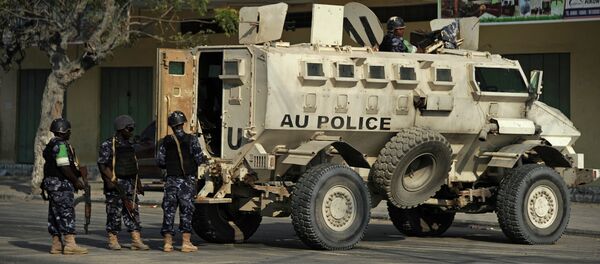MOSCOW (Sputnik) — At least 147 people died on Thursday when gunmen from the radical Islamist group al-Shabaab attacked Kenya's University College in Garissa.
Al-Shabaab (full name Harakat al-Shabaab al-Mujahideen), al-Qaeda’s offshoot, is based in Somalia.
The group is engaged in an armed conflict against the central government of Somalia and prevents UN humanitarian activities in the country.
Al-Shabaab originated in 2003 as an Islamic youth (Salafi) movement. Until 2006, its activities were hardly noticeable. Beginning in 2007, after the invasion of Somalia by Ethiopian troops, al-Shabaab became actively involved in the armed fight against the "occupiers" and the Transitional Federal Government (TFG).
According to media reports, al-Shabaab is not a homogeneous organization and includes a large number of factions that are divided by clan and ideology. According to various data, al-Shabaab armed groups include between 7,000 and 14,000 members.
Al-Shabaab derives funding from taxes imposed on local businesses, export and import activities, real estate, financial charges and contributions to the war needs, as well as from donations, coming from Arab countries and Somalis residing in the United States, Canada and Western Europe.
By mid-2010, al-Shabaab had captured almost half of Somalia’s territory and launched an aggressive offensive against government troops and African Union peacekeeping forces (AMISOM) in Mogadishu, Somalia’s capital. The Islamists were unable to take over the capital and after suffering significant losses were forced to withdraw their main forces from Mogadishu in August 2011.
Harsh Sharia laws, including the stoning to death of women suspected of adultery and amputation of hands for thieves, were introduced in the areas that came under control of the group.
Al-Shabaab still controls significant areas of Somalia’s southern and central provinces.
Currently, the militants clash with the government troops and African Union peacekeepers who act in accordance with the mandate issued by the UN Security Council almost on a daily basis.
Al-Shabaab has repeatedly claimed responsibility for numerous bombings in Somalia and other African countries.
The leader of al-Shabaab, Ahmed Abdi Godane, died in a US airstrike in Somalia in September 2014. His predecessor, Aden Hashi Farah Ayro, was killed in a US airstrike in 2008.
Abu Ubaid Ahmed Omar was named al-Shabaab’s newly elected leader in September 2014.



